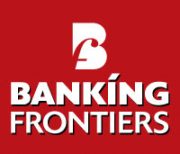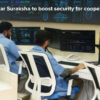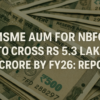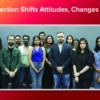In an era of rising risk, what is interesting is the transformation of personal perspectives of risk professionals. Two Chief Risk Officers, Rakesh Bansal from Hero Housing Finance and Satyanandan Atyam from Tata AIG General Insurance, share their personal perspectives:

Manoj Agrawal: How were you initially attracted to the profession of risk management? What do you find most appealing about being a risk professional?
Rakesh: During the initial days of the NBFC industry, there was no separate risk function – we were responsible for doing credit appraisals and collection apart from sourcing the business. NBFCs faced tough times during mid-90s as this model lacked the desired expertise and controls. In the late 90s, verticalization of business, credit, risk and collection started happening for better control and governance. During this time, I received feedback from my bosses that I am better suited for credit risk function as I displayed natural flair. I also felt more comfortable in understanding various SME businesses and started focussing on credit risk function.
Over a period of time, it became evident that banks and NBFCs/HFCs get valued based on the quality of assets and the credit risk team responsible for the same. In a competitive environment, credit risk function is like wine – the older it is, the better valuation you get.
In the current scenario, the smartest people in the company are trying to impress you with new product ideas – this keeps you in learning mode and helps you sharpen your skills, and this keeps me excited about the credit risk function.
Satyanandan: I had stumbled upon the risk management profession by accident – it was never planned. I had been into roles of system controls auditor, advisory consultant, chief information security officer, data privacy officer, presales manager and risk consultant in industry as well as in consulting organization. As businesses grow, they stumble upon decision making in an VUCA environment. Hence the risk manager must orchestrate and bring together strategic views of the enterprise-wide risks which assist in expanding stakeholders’ perspectives and deepening their insights.
I moved into the role of chief risk officer at age of 39. My reporting manager, the head of the NCCL, was my role model. He was a fearless person who used to drive with huge conviction. He has automated the complex clearing and risk management systems of the exchange. It was a great journey working under him and could build on the mental strengths of self-conviction. It is heartening to see that increasingly the boards of Indian corporates are recognizing the value the risk function beyond regulatory mandates. It is a good phase to be in where management teams are seeking value in the risk perspective.
Describe 2-3 ways in which you have changed your approach to risk assessment compared to earlier days?
Rakesh: In the early 90s, there were very few enablers for doing a risk job. There were no credit bureaus, no fintech companies. All processes were manual. Human touch and reliance on individual expertise was way higher than it is now. NBFCs were operating more like regional structures than integrated national structures. Now, most information is available at the click of a button. There are tools for analyzing portfolio performance. A lot of importance is given to data analytics in framing policies and processes.
The availability and dissemination of information is far higher. Lot of resources are allocated for data planning, analysis and machine learning as compared to 20 years ago. Also, fintech companies provide information on customer credit history, criminal background, validation of their financial and non-financial documents and social media footprints. We employ these tools in performing customer identification procedures and assessing their credit worthiness. In short, we are far more focussed on digital means than it was 20 years ago.
Satyanandan: The compliance and IA functions are now objectively focusing on the business controls for adherence to regulations and assurance. The risk function is becoming more strategic to business, and as a second line of defense, it must address risk assessment for areas which are prioritized by the management. Further, as risk functions are increasing, becoming small and focused, the risk assessments on the material areas which have critical inherent risks need to be prioritized. Materiality assessment is a primary determinant for identifying the areas where efforts need to be channelized. The risk function is expected to continuously assess material risks of cyber, IT DR, privacy, internal financial controls and KRI arising from the various risk appetite statements.
Driven by technology, data and innovation, the world is transforming at an extremely rapid pace. What critical factors do you think will empower risk managers?
Rakesh: Some of the new age HFCs/NBFCs/banks are experimenting with paperless online algorithm-based lending. They have invested a lot on AI, ML and data science, and have honed their models very well – and some of them are successful. Large institutions have also moved in that direction but their agility to match up the pace is constrained because of data availability of their own customers and not being able to analyze the data as well as their new age counterparts. Everything boils down to data planning at the initial phase of the organization when one doesn’t have past baggage of insufficient data points on large customer base. Hence, risk leaders should plan the data points well enough that must go in the data lake – this will help them keep pace with the digitalization of credit decision making process.
Satyanandan: Technology is now pervasive and is embedded into every business process. The other way to say is that the business processes are delivered through technology. Risk and controls have moved from manual environment to realm of technology. The understanding of tech risk controls, tech debt issues, cloud risks, blind spots on software composition risks, enterprise architect drift, etc – are the new risk on the anvil. It is high time that the risk office his headed by a financial risk practitioner who is tech risk capable. This is the new age skill that will be required to add value to the management and board level conversations on enterprise risk posture. Risk analytics is a critical element which is emerging as an indicator to be consumed for risk decisions.
What books and movies have helped you become a better risk manager? What would you like to read in the near future?
Rakesh: I have read 3 books on risk management related topics. The first is One Up on Wall Street by John Rothchild and Peter Lynch. This book is all about analyzing the company by using financial statements and feel on the ground. They have emphasized factors which keep the company sustainable and competitive in the long run. This was helpful in building portfolio on the SME business. Second book is When Genius Failed by Roger Lowenstein. This book was on excessive use of data analytics without any regard to quality of underlying assets and focussing on past performance to predict the future performance. Most of the time, risk managers just look at the data without use of common sense and underlying asset quality and qualitative measures. This book was written considering the fall of long-term capital management hedge funds where excessive importance was given to past data and models in late 90s. Same mistake was made during subprime crisis where risk managers lost track of deteriorating underlying asset quality. Income and LTV norms were compromised, and this led to disaster, and which saw the worst financial crisis in the world. The third book, Bubbles and How to Survive Them by John Calverley, was also a good read wherein the author has anticipated the subprime crises which eventually happened. Going forward I would like to read Dark Side of Risk Management by Luca Celati.
Satyanandan: Books are a meaningful way to get inspired and get life lessons. The Shoe Dog by Phil Knight, details the many risks and daunting setbacks that stood between him and his dream – along with his early triumphs. The book is about lessons of building something from scratch, overcoming adversity, and ultimately leaving your mark on the world. The power of self-conviction and driving through all odds is a spirit that everybody needs to imbibe.
The Alchemist by Paulo Coelho inspires us to live more purposeful and meaningful lives. It encourages us to follow our dreams, trust in the journey, and embrace the challenges and opportunities that come our way. It imparts the significance of listening to our inner voice and being true to ourselves.
The Pursuit of Happyness is the movie I highly recommend to any young professional who needs to understand that desire to achieve is more important than the talent of the individual. Happiness depends on the pursuit of having it. Every individual has their own sort of skills. It is practice, determination, and effort that can make each skill a unique feature.
Has being a risk professional made you a different kind of parent and family member? Please share your experience.
Rakesh: Yes, there are a few learnings to manage the personal risk. In the late 50s, medical insurance is the most important thing and absence of the same can dent your financial resources badly. Always take properties and financial assets in joint name and document all the assets including insurance policies in a well-organized excel sheet which should be password protected and should be available with your family members. Ensure that you write a will that can be accessed by trusted family member/friend. Invest on your health and on your education/kid’s education as they will keep you ticking in all difficult situations.
Read more:
Automated, Adaptive, AI-enabled Architecture is a must









